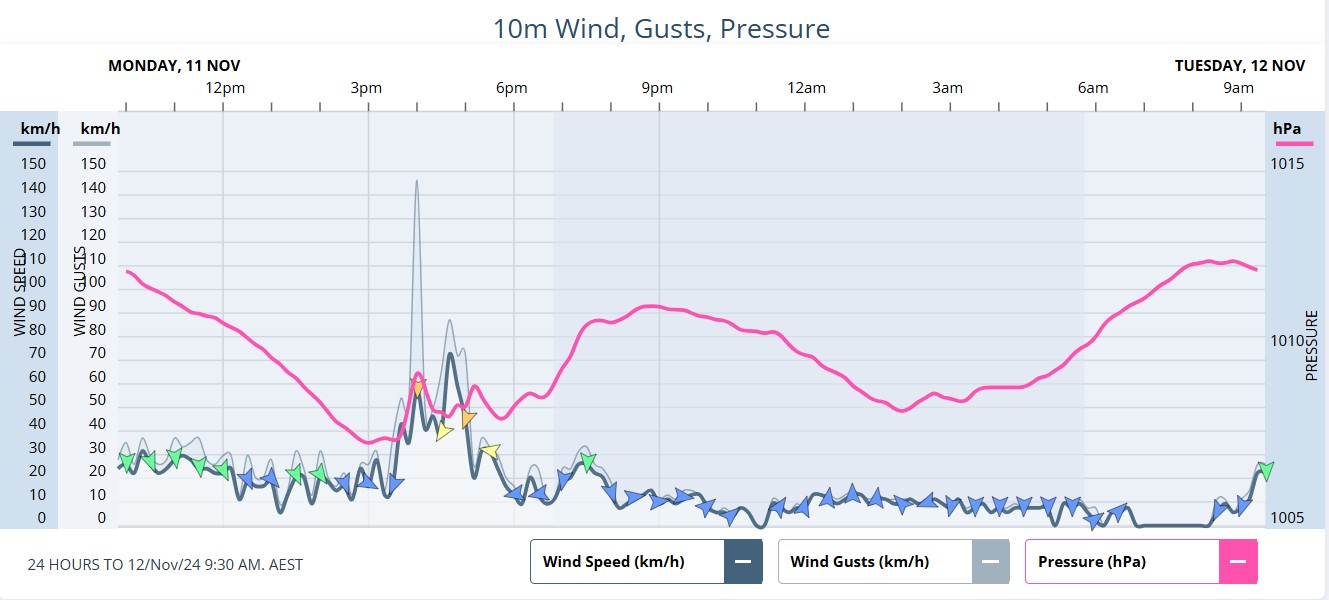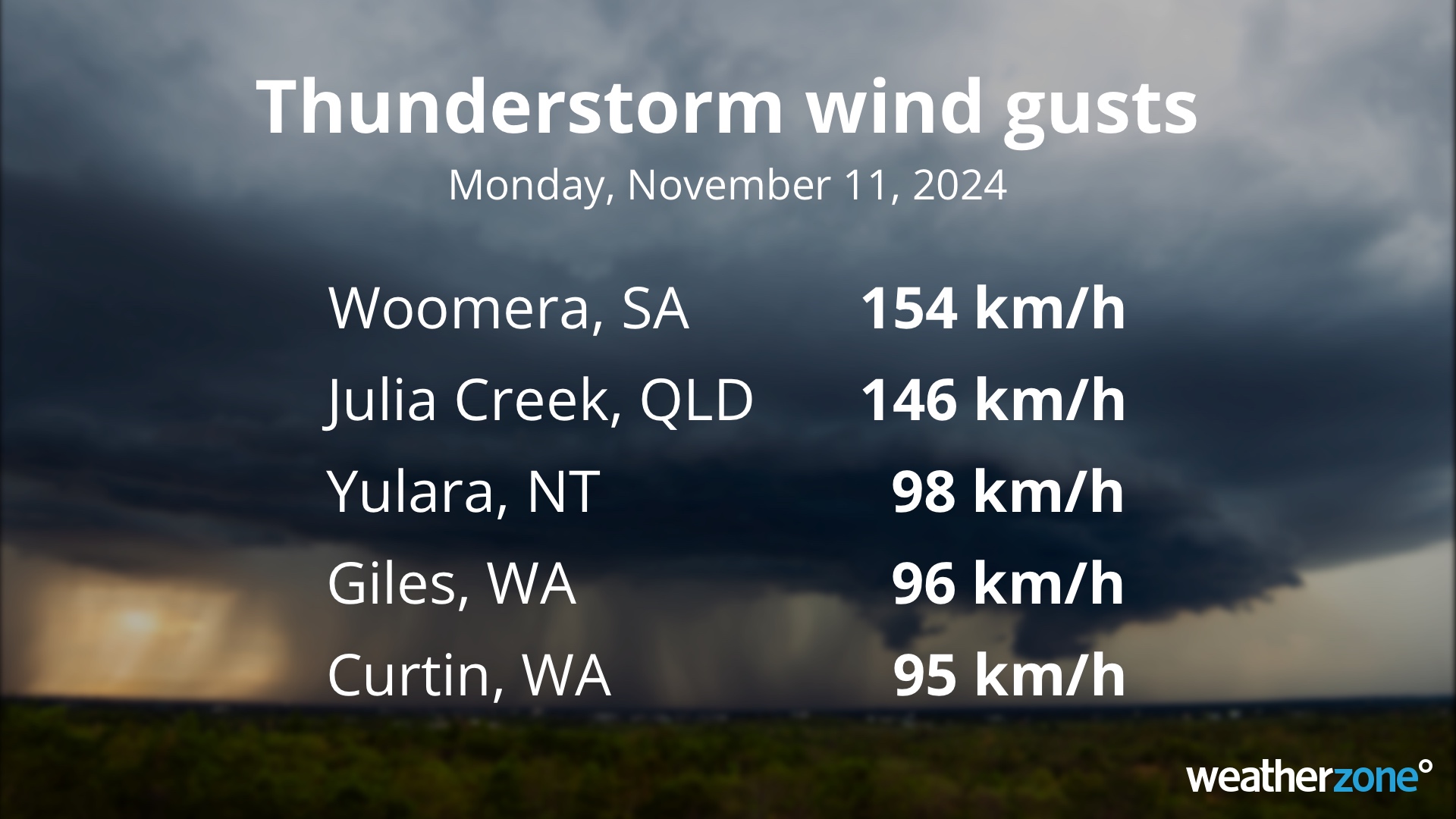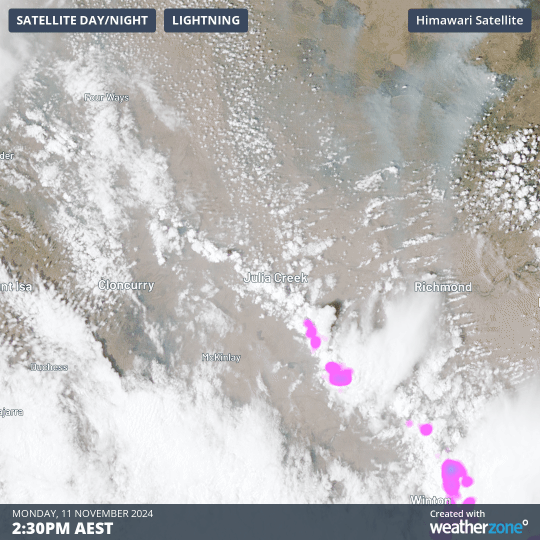Outback roofs torn off as gusts exceed 150 km/h
Wind gusts associated with thunderstorms caused some extreme readings on anemometers (wind recording instruments) as well as damage to homes and other structures in some remote Australian locations on Monday.
The Queensland town of Julia Creek, about three hours east of Mount Isa, reported a gust of 146 km/h on Monday afternoon during storms that dumped 31.8mm of rain within a couple of hours.
A roof was torn off one house, numerous other dwellings reported damage, while many people were left without power, the ABC reported. https://www.abc.net.au/news/2024-11-11/qld-julia-creek-bom-winds-outback-storm-damage/104587846

Image: It was the strongest gust at Julia Creek since the weather station commenced wind observations in 2001.
But the damaging 146 km/h gust at Julia Creek wasn't even the strongest in outback Australia on Monday. That was the 154 km/h gust recorded around 5:30pm at Woomera, South Australia – the strongest at that site in at least 22 years.
- As with Julia Creek, Woomera's wildest gusts coincided with heavy rain, with 16mm of rain tumbling down in just 10 minutes, while a further 8.4mm of rain fell later in the evening.
- The 24-hour total of 24.4mm was the heaviest daily rainfall for 2024 to date at the parched outback RAAF base where the annual average rainfall is just 182.3mm.
Meanwhile gusts approaching 100 km/h were also reported at the outback weather stations of Yulara (NT), nearby Giles in WA, and Curtin in the Kimberley region of northwest WA.

In total, more than 1.4 million lightning strikes were detected by Weatherzone’s Total Lightning Network on another highly charged day in Australian skies.
Why such strong winds in unusual places?
When you think of extremely strong winds in Australia, you tend to think of places up north that are subject to tropical cyclones, or places down south that get slammed by Southern Ocean cold fronts, or perhaps even the Tasman Sea coastline during East Coast Lows.
All of those types of weather events tend to produce strong sustained winds as well as extreme wind gusts.
With thunderstorms, the extreme winds tend to be short-lived as air is expelled in downdrafts during the storm.
When a wide area of Australia has the key ingredients for storms – an unstable atmosphere plus an abundance of humidity and warmth – outback regions can cop severe thunderstorms (and the severe gusts that accompany them) just like anywhere else on the continent.

Image: Satellite imagery showing the severe thunderstorm developing over Julia Creek in NW Queensland.